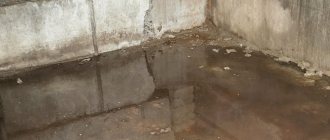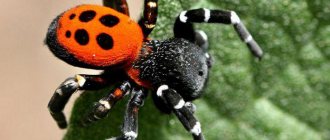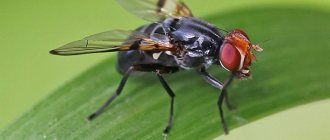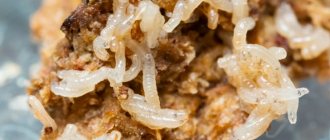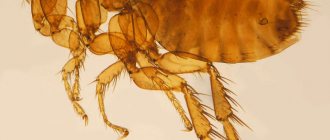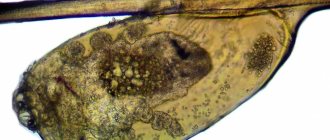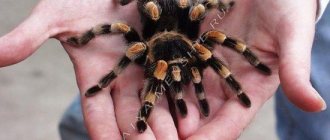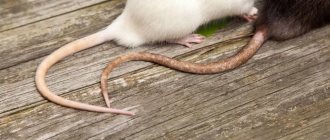- Wild animals
- >>
- Insects
The Madagascar cockroach is one of the many fascinating animal species native to the island of Madagascar. This insect looks and sounds different than anything else. This is a fascinating insect because of its unusual ability to produce sound. However, his unusual appearance and thoughtful behavior also contribute to his attractiveness.
Origin of the species and description
Photo: Madagascar cockroach
Madagascar cockroaches are an endemic species found only on the island of Madagascar. Close relatives of hissing cockroaches in Madagascar include mantids, grasshoppers, stick insects and termites.
Fun fact: Madagascar cockroaches are known as "living fossils" because these insects are very similar to prehistoric cockroaches that lived on Earth long before dinosaurs.
Madagascar cockroaches are docile, easy to care for, and are often kept as pets. They require a small room with a place where they can hide because they prefer to stay away from light. Due to their tendency to climb, the living area should be checked to see if they can climb out of the enclosure.
Video: Madagascar cockroach
Aquariums or terrariums found in pet stores work well, but it is wise to cover the top few inches of glass with Vaseline in order to prevent them from leaving their habitat. They can live on fresh vegetables along with any type of high protein pellet, such as dry dog food. Water can be provided by keeping a damp sponge in its natural environment.
Fun fact: In some places, people eat hissing cockroaches because they are rich in protein and easily available. Eating insects is called entomophagy.
Nutrition and care
People do not always raise cockroaches at home as pets. In most cases, they go to feed hedgehogs, lizards, spiders or snakes. They are very nutritious and do not emit an unpleasant odor.
In an apartment, keeping Madagascar cockroaches comes down to setting up a terrarium. Spacious containers are equipped as follows:
- The bottom is covered with sawdust or coconut shavings. It is allowed to use small sawdust from wood for cat litter. To avoid tick infestation, the litter is changed regularly, about once a month. Parasites often travel on cockroaches without causing them much harm.
- When arranging the interior space, you should arrange hidden places. For this purpose, it is allowed to use cardboard cells from table eggs. It is possible to create a multi-tiered structure from them. Insects will hide in it during the daytime.
- The air temperature in the enclosure should be no more than +28°C. If the temperature does not meet the required parameters, the beetles will stop reproducing. The minimum is +17°C and the maximum is +32°C.
- The terrarium must have a lid with holes for ventilation. Otherwise, you will have to lubricate the walls with Vaseline: the larvae easily move along vertical surfaces.
- To maintain the required humidity level, once a week the inside of the container is sprayed with boiling water. The acceptable indicator should correspond to 65%. The permissible criterion should not be exceeded so that the litter does not begin to rot.
In addition to food, cockroaches need water.
Don't forget about insect drinkers. Under natural conditions, insects obtain liquid from fruits or consume dew. To prevent the beetles from drowning, cotton wool is placed in the center of the container in the drinking bowl .
Beetles are not picky about food, but they need foods rich in calcium. It serves to strengthen the shell. In most cases, Madagascar cockroaches feed on :
- bread;
- apples and bananas;
- various vegetable crops;
- boiled unsalted cereals;
- boiled egg;
- cookies;
- boiled corn;
- grass, cabbage leaves;
- flower petals.
To prevent cannibalistic tendencies, you should constantly change your diet. Food should always be available. It is preferable to lay it on the bottom of the terrarium. It is not recommended to use pet food formulations due to the insecticides they contain.
Madagascar cockroaches are not picky eaters.
Appearance and features
Photo: What a Madagascar cockroach looks like
The Madagascar cockroach (Gromphadorhina portentosa), also known as the hissing cockroach, grows up to 7.5 cm in length when mature. These cockroaches are one of the largest species of cockroaches. They are brown, wingless and have long antennae. Males have large bulges in the chest and antennae that are moister than those of females.
Unlike most other cockroaches, they do not have wings. They are excellent climbers and can climb smooth glass. Males are distinguished from females by thicker, hairier antennae and pronounced “horns” on the pronotum. Females carry a carton with eggs inside and release young larvae only after the eggs hatch.
Like some other forest-dwelling cockroaches, parents and offspring usually remain in physical contact for long periods of time. In captivity, these insects can live 5 years. They feed mainly on plant material.
While many insects use sound, the Madagascar hissing cockroach has a unique way of creating a hiss. In this insect, sound is created through the forced displacement of air through a pair of modified abdominal spiracles.
Spiracles are breathing pores that are part of the respiratory system of insects. Because the airways are involved in respiration, this method of sound production is typical of the respiratory sound produced by vertebrates. In contrast, most other insects produce sound by rubbing body parts (such as crickets) or vibrating a membrane (such as cicadas).
Pros and cons of apartment living
Keeping these insects at home has some disadvantages and advantages. Among the advantages are:
- pickiness in food;
- life expectancy with proper care;
- hypoallergenic;
- absence of poison;
- affordable price;
- no unpleasant odor.
In addition to the existing advantages, keeping insects in an apartment also has some disadvantages. These beetles are characterized by increased fertility, a unique appearance, high mobility and can crawl around the room.
You can purchase insects on websites or in specialized stores. The minimal cost and ease of care make it possible to keep these beetles even for school-age children. In Thailand they are eaten due to their high protein content.
This is interesting: big black cockroaches.
Where does the Madagascar cockroach live?
Photo: Madagascar hissing cockroach
These large pests thrive in warm climates and become sluggish in cold temperatures. Little is known about its ecology, but the insect probably lives on the forest floor in rotten logs and feeds on fallen fruit.
Madagascar hissing cockroaches live in damp places including:
- places under rotten logs;
- forest habitats;
- tropical areas.
Madagascar cockroaches are native to the island of Madagascar. Because they are not native to the country, these pests are rarely the cause of cockroach infestations in the home.
To keep these cockroaches at home, the following rules should be followed:
- the aquarium or other container should be large enough to allow the cockroaches room to move around. Clear plastic or glass are best so you can more readily observe their behavior;
- a lid is needed for the tank to prevent them from escaping. Although wingless, they are quite mobile and can climb up the sides of a container;
- mouse bedding or wood shavings will line the bottom of the cage. Bed linen should be changed periodically, especially if there is a high level of humidity;
- a wooden block or log is needed for them to crawl. Cockroaches tend to become aggressive if any object is present in the cage;
- there should be a tube filled with water and covered with cotton wool. Cockroaches will drink water from the cotton and push it back into the tube to keep it moist;
- The water must be changed every week.
Buying a Madagascar hissing cockroach
These are no ordinary cockroaches invading your kitchen. They cost between $2 and $10 each. If you want to create your own breeding colony, purchase at least 10 individuals; request four adult women for every adult man. This will increase the chances that your nesting colony will provide large numbers of cockroaches for many years to come.
This pet can be a good choice for children, especially if you are trying to help your child overcome their fear of crawling creatures. This slow-moving insect does not run like other insects, which is a major fear factor for those who suffer from entomophobia (fear of insects), and it tolerates handling up to a certain point. If any insect can be considered cute, the hissing cockroach from Madagascar comes pretty close.
What does the Madagascar cockroach eat?
Photo: Female Madagascar cockroach
In their natural environment, Madagascar hissing cockroaches are useful consumers of carrion and rot.
Hissing cockroaches are omnivores that feed mainly on:
- animal carcasses;
- fallen fruit;
- rotting plants;
- small insects.
Interesting fact: Like 99% of all cockroach species, Madagascar cockroaches are not pests and do not inhabit human homes.
These insects live on forest floors, where they hide among fallen leaves, logs and other detritus. At night they become more active and scavenge for food, feeding primarily on fruit or plant materials.
At home, Madagascar cockroaches should be fed a variety of fresh vegetables and fruits, as well as green leaves (except iceberg lettuce) in combination with a high protein kibble food such as dry dog food.
Carrots seem to be a favorite, along with oranges, apples, bananas, tomatoes, celery, pumpkin, peas, pea pods and other colorful vegetables. Remove any leftover food after some time to avoid spoilage. The water should be served in a shallow container lined with cotton or other material that can absorb the liquid to prevent your cockroaches from drowning.
Madagascar cockroaches are hardy, like most cockroaches, and have few health problems. It is only important to monitor hydration. If your pet cockroach looks shriveled or wrinkly, it is likely not getting enough water.
Now you know what to feed the Madagascar cockroach. Let's see how it survives in the wild.
Features of behavior
Madagascar cockroaches are hissing insects that are nocturnal. They are quite timid by nature, so when they sense danger they freeze or quickly look for secluded places where they can safely hide.
If the camouflage is unsuccessful, they can produce loud hissing sounds, thanks to which they manage to scare away small animals and birds. This defense response allows cockroaches to survive in their natural environment.
Insects are absolutely safe for humans. They do not bite, do not release poison, and generally behave very quietly. For owners, domestic exotics do not create any special problems.
The lifespan of a cockroach in nature is up to 1.5 years; at home, life expectancy increases to 4-5 years (with proper care and feeding).
Features of character and lifestyle
Photo: Male Madagascar cockroach
Males use the horns in aggressive confrontations reminiscent of battles between horned or antlered mammals. The rivals hit each other with their horns (or abdominal cavity) and often make amazing hisses during the fight.
Madagascar cockroaches make the hissing sound for which they are famous.
Four types of hissing have been identified, with different social purposes and amplitude patterns:
- the hiss of a male fighter;
- courtship hiss;
- mating hiss;
- alarm hiss (a loud hiss that frightens predators).
The cockroach hisses by pushing air through a pair of modified spiracles, which are small holes through which air enters the insect's respiratory system. The spiracles are located on the sides of the chest and abdomen. They are believed to be one of the only insects that use their spiracles to make sound. Most other insects produce sound by rubbing parts of their bodies together or by vibrating their diaphragms.
Male Madagascar cockroaches hiss more as they establish territories and defend themselves from other males. The size of their territory is small. The male can sit on a rock for months and defend it from other males, leaving it only to find food and water.
Aggressive hissing and posturing are used to warn other males and predators - the larger male who hisses more often wins. A dominant male will stand on his “toes,” called stilts. Stilting is a way for males to “show off.” Males use humps on their pronotum as a defense mechanism. The pronotum is a plate-like structure that covers most of their thorax. Fighting between males does not cause injury.
Females are more sociable and do not fight with each other or males. Because of this, they are less prone to hissing, although in rare cases the entire colony may begin to hiss in unison. The reason for this behavior is not yet understood. Females carry the egg inside and release young larvae only after the eggs hatch. As with some other wood-dwelling cockroaches, parents and offspring typically remain in close physical contact for long periods of time.
Features of reproduction
The unusual nature of the reproduction process of Madagascar cockroaches lies in their tendency to bear eggs inside the body. The eggs formed after fertilization stick together and form a separate compartment - the ooteca. It is in the abdomen throughout the entire ripening period and has a yellowish or white color.
Madagascar cockroaches make hissing sounds
On average, this period lasts about 50−70 days (about three months). The female is able to pull it outside to air it out. Pregnancy can be judged by the increased size of the individual and its swollen abdomen.
The gestation period depends on climatic conditions. In warm climates it is much less. The larvae begin to emerge from the eggs inside the female, squeezing out with the remains of the ooteca. After birth, the beetles are white in color and up to several millimeters in size.
Immediately after birth, insects feed on the remains of the ootheca, gradually acquiring the color characteristic of an adult beetle. The female produces approximately 25 larvae per litter. Subsequently, she vigilantly protects them. For several days they sit near their mother, but as they grow older they leave to explore new territories.
The larvae molt up to 6 times as they mature. The shell cannot stretch, so it cracks and falls off as the insect grows. The beetles eat it, gradually acquiring a dark color.
The newly grown cover gradually hardens. Molting depends on external living conditions and lasts from six months to a year in general. The surface cover has 10 segmental areas articulated by soft tissues. A break along the back allows the formation of a new shell.
One female Madagascar cockroach gives birth to 25 individuals at once
After the new body appears, the head and eyes appear. At this time they can be seen, although previously they were hidden. Afterwards, the whiskers and paws begin to stretch out. The abdomen is in the shell longer than any part of the body. The appearance of the insect changes significantly half an hour after molting.
The cockroach expands in width and acquires a flat structure. Its body is shortened, the folds between the segments are smoothed out, and the abdomen is elongated. The entire period of formation of a new look takes no more than 40 minutes. The shed shell is eaten by the individual. It is necessary to strengthen the new shell and change its color. On the second day after molting, the individual will not differ from other larvae.
Social structure and reproduction
Photo: Baby Madagascar cockroaches
The Madagascar cockroach even begins its life in an unusual way. The life cycle of the hissing Madagascar cockroach is long and different from most other cockroaches. Females are oviparous, with the female carrying the eggs and raising the newborn larvae inside her body for approximately 60 days until they become first-order larvae.
One female can produce up to 30-60 larvae. This insect has an incomplete life cycle: egg, larva and adult stage. The larvae undergo 6 moults before reaching maturity after 7 months. Larvae and wingless adults can live from 2 to 5 years.
There are striking differences between the sexes. Males have large horns behind their heads, while females have small “bumps.” The presence of anterior horns makes it easy to recognize the sex. Males have hairy antennae, while females have smoother ones. The behavior of men and women also differs: only men are aggressive.
Madagascar cockroaches molt (shed their outer skin) six times before they reach maturity. This is the period when the cockroach is most vulnerable. He may not eat for a whole day before molting as he prepares his body for the process. When it reaches 7 months, it stops molting and reaches maturity.
Is it worth getting such a pet?
Whether to keep a Madagascar cockroach in the house or not is a rhetorical question.
If a hobby doesn’t bother others, then why not. However, it is worth thinking before getting such an original pet, weighing the pros and cons.
Everyone is in favor
The Madagascar hissing cockroach will not cause much trouble at home. Keeping it is easier than, say, fish in an aquarium or canaries in a cage.
As an unusual pet to keep in a terrarium, you can also choose a wolf spider, tarantula, black widow spider, tarantula spider, salamander, newt, crocodile, chameleon, jerboa, snail, axolotl, leopard gecko, sand boa, corn snake, iguana , turtle. Besides:
- they do not fly, unlike other types of cockroaches;
- do not emit an unpleasant odor;
- it’s easy to hide a tray with insects so as not to shock guests;
- they reproduce easily, which is important if insects are bred to feed the inhabitants of a home terrarium - snakes, iguanas;
- do not get dirty in the house;
- they do not bite and cannot harm a person;
- You can sell quality specimens to cockroach race organizers.
Holiday organizing agencies in Ukraine offer such an attraction; this is a new type of business.
While it is not very widespread, it is not cheap, and therefore consumers are people with above-average incomes. This entertainment is often arranged for guests of corporate events.
With this attribute, in particular, the day of March 8 is celebrated, because the running season is precisely this spring month; in winter, insects are not active enough.
There are many countries in the world where cockroach racing is a common form of entertainment for the lower classes of the population, and this will not necessarily be a Madagascar.
Did you know? The cockroach has existed on earth for 300 million years and during this time has not changed at all. This is proven by fossils and insects found in amber. It is also believed that this class of insects will survive even a nuclear war.
In addition to those listed above, there are 2 more types of use of cockroaches:
- for food;
- like living decoration in the form of necklaces.
Everyone is against
There are no specific contraindications. But if there are family members in the house for whom the proximity to these insects does not bring pleasure, to put it mildly, then the answer is unequivocal - no. In addition, pet cockroaches have been proven to cause asthma.
Whether this applies to Madagascans is unknown. But to avoid troubles, if there are people with allergies in the house, it is better to avoid keeping Madagascar cockroaches.
Natural enemies of Madagascar cockroaches
Photo: What Madagascar cockroaches look like
Madagascar cockroaches likely have many species of predators, but there are few documented relationships between them. Arachnids, ants, tenrecs and some land birds are likely predators of these cockroaches. As mentioned earlier, an anti-predator strategy is an alarm hiss, which produces a loud snake-like noise that can startle potential enemies.
The mite Androlaelaps schaeferi, formerly named Gromphadorholaelaps schaeferi, is a typical parasite of the Madagascar cockroach. These mites form small clusters of four to six individuals at the base of the leg of their cockroach host. Although it was originally thought that this mite was a bleeder (blood-sucking), recent research has shown that the mite simply "shares" the cockroach's food items.
But since these mites do not harm the cockroaches they live on, they are commensals rather than parasites unless they reach abnormal levels and begin to starve their host. Recent studies have shown that these mites may also have beneficial properties for cockroaches as they clean the surfaces of cockroaches of pathogenic mold spores, which in turn increases the life expectancy of cockroaches.
The insects themselves pose no known danger to humans. Males are extremely aggressive and usually fight rival males. Male cockroaches create and defend territories using a unique sound. They are very territorial and use their horns in combat. Females only hiss when disturbed.
Characteristics of an insect
They got their name from the island of Madagascar, where the largest concentrations of these insects are found. The Madagascar hissing cockroach includes approximately 20 species. A distinctive feature is the absence of wings at all stages of insect formation. This criterion makes it difficult to determine the age of representatives of this species.
The appearance of the beetle is peculiar: the body is covered with a shell of chitin, reminiscent of a shell. Adults grow up to 9 centimeters in length and have a wide abdomen. The color varies from red with different shades to black. Age can be determined by the contrast of color: as it grows older, it darkens.
The sex of an insect should be determined by the outgrowths on the shell, which are found only in males. Often a deformed or broken mustache can indicate that a person is masculine. This is characterized by the frequency of battles for superiority, which the beetles organize among themselves.
In females, the last two segments are highlighted in black. The male is endowed with only one such fragment. The larvae are practically indistinguishable by gender. Visually, they are similar to adult representatives of their species, but the scutellum on the surface of the shell is less developed.
These insects do not cause allergies
Like many insects, the Madagascar beetle is timid. Under natural conditions, they become active at night, and during the day they sleep under stumps or in any places where there is the smell of wood. They only come out after dark to search for food. These insects do not pose a danger to humans:
- do not bite (for no reason);
- do not release poison;
- do not show aggression.
The defense reaction was developed exclusively to preserve life in natural habitats. During an attack, they behave in a special way:
Read on topic:
Where did the cockroaches go from Russian apartments: the real truth
15.10.2019
Do domestic red cockroaches bite humans?
15.10.2019
Recipes for cockroach poison with boric acid
21.02.2019
How to kill cockroaches at home yourself
21.02.2019
- freeze in place (with little noise);
- fall tightly to the ground;
- begin to produce loud hissing sounds (in case of unsuccessful camouflage).
The hissing sounds are very similar to snake sounds, and therefore can scare away any enemy. Cockroaches are hunted mainly by birds and small animals. They quickly move away from the dangerous sounds made by the beetle.
Hissing is carried out by special organs - spiracles. At the moment of danger, the beetle sharply compresses its body and contracts its lungs. Males often make similar sounds during ritual ceremonies and during sexual hunting. A fight is a butting. The weak beetle rolls over onto its back, admitting defeat.
In the wild, cockroaches live for about one and a half years. In an apartment, their life expectancy increases to 5 years. The approaching death of the insect should be judged by the color of the chitinous layer: it becomes significantly lighter.
Greater forest cockroach / Blaberus giganteus
In the tropical rainforests of South and Central America you can find a large cockroach, which locals call the cave cockroach. A small population of this species lives in South Africa.
Some adults can grow up to 10 cm in length. They prefer to settle in caves, crevices of trees and rocks, and old abandoned hollows. They have a very flat body, so they can squeeze into the narrowest crevices.
The tropical forest dweller was discovered and scientifically classified in 1831. This is a flying species, the wingspan of which reaches 15 cm in flight. Life expectancy depends on living conditions, but on average they live 18–20 months.
